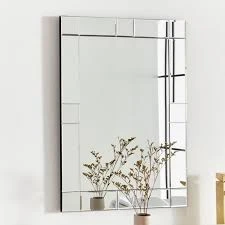

The Fascinating World of Frosted Glass That Changes to Clear
Frosted glass, known for its alluring soft texture and opacity, has adorned many homes and offices, providing an air of privacy while allowing natural light to filter through. However, what if this traditional material could transform at the touch of a button? The advent of smart technology has introduced a cutting-edge innovation frosted glass that changes to clear when needed, merging aesthetics with functionality.
Understanding Smart Frosted Glass
Smart frosted glass operates through a mechanism known as switchable glass technology. This innovative solution uses a layer of liquid crystal film sandwiched between two sheets of glass. When an electric current is applied, the liquid crystals align, rendering the glass transparent. Conversely, when the power is turned off, the liquid crystals scatter light, resulting in a frosted appearance. This duality offers consumers unprecedented control over their environment, making the glass versatile for various applications.
Applications in Interior Design
The applications for smart frosted glass are expansive, particularly in interior design. Homeowners can utilize this technology in bathrooms, where instilling a sense of privacy is paramount. Imagine a bathroom with large windows overlooking a garden; with the flick of a switch, residents can create a serene, frosted retreat, providing both privacy and a stylish look.
In office settings, smart frosted glass is increasingly popular for conference rooms and office partitions. It allows for an open, bright workspace while creating the option for privacy during important meetings. This adaptability fosters communication and collaboration by giving teams the ability to change their environment instantly.
Transforming Commercial Spaces

Beyond residential and office use, smart frosted glass is making waves in commercial settings too. Restaurants and cafés are now employing this technology to enhance their ambiance. During the day, frosted glass can create a cozy atmosphere; as the sun sets, the space can transform into a clearer view, inviting the nightlife in without compromising on style or intimacy.
Furthermore, retail environments can leverage this technology by having displays that switch between frosted and clear. A retailer could showcase certain items behind frosted glass to pique curiosity while allowing customers to see more about what’s inside as they approach.
Energy Efficiency and Privacy
From an energy efficiency standpoint, smart frosted glass provides practical benefits as well. The glass can be integrated with automated systems that respond to sunlight. During peak sunlight hours, the glass can remain frosted, reducing glare and unnecessary heat, thereby lessening the load on air conditioning systems. This not only improves comfort but also enhances energy savings, leading to a smaller carbon footprint.
Privacy is one of the most compelling reasons to invest in this technology. With concerns about transparency in modern architecture, a switchable solution offers a unique way to find a balance between openness and seclusion. It allows individuals to control visibility, making it ideal for spaces such as medical clinics or counseling offices, where confidentiality is of utmost importance.
The Future of Smart Glass Technology
As technology advances, we can expect even more innovative uses for smart frosted glass. Imagine smart homes that can adjust their surroundings based on the owner's preferences or mood. With further integration into smart home systems, users will be able to control privacy and lighting from their smartphones, paving the way for a truly customizable living experience.
In conclusion, frosted glass that changes to clear represents a remarkable convergence of design, technology, and function. Its versatility across various settings showcases not only its aesthetic appeal but also its practical benefits in terms of privacy and energy efficiency. As more consumers embrace smart technologies, this type of glass is poised to become a staple in modern architecture, redefining how we think about light, space, and personal privacy. The future looks promising for this innovative material, and its potential applications are limited only by our imagination.